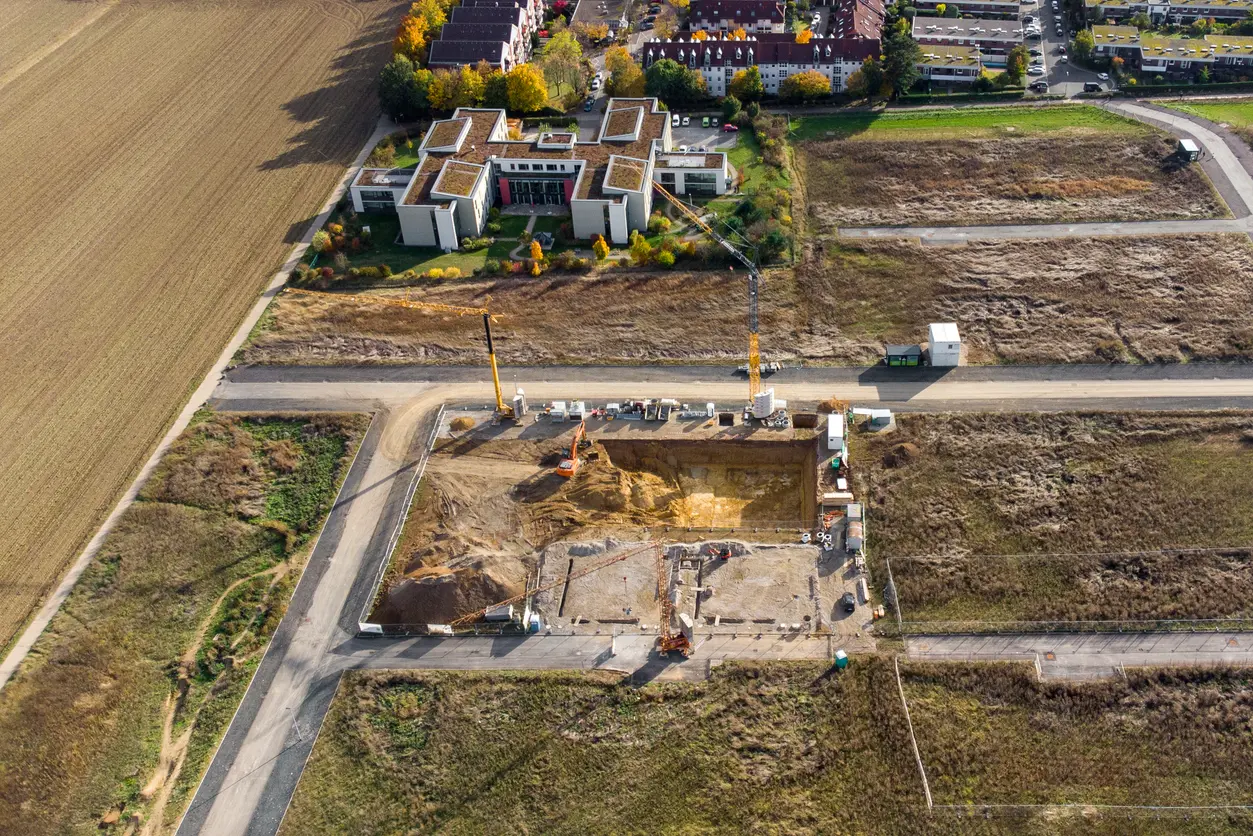
As leading real estate attorneys in San Francisco, we understand the many difficulties associated with navigating real estate development, transactions, and complex regulatory frameworks. For top-tier legal guidance, schedule a consultation with Estavillo Law Group.
If you’re a real estate developer in the San Francisco Bay Area, you know that erecting a new building isn’t as simple as it sounds. A vast, complex network of legal frameworks dictates what, when, how, and where you can pursue new development.
Although some entrepreneurs can navigate the regulatory landscape on their own or with help from an in-house legal team, that’s not always an option. Luckily, you can access top-tier legal guidance when you partner with the real estate law experts at Estavillo Law Group.
This article will provide you with a comprehensive guide to land use & economic development in the San Francisco Bay Area, including the intersection between the two, various types of land use and zoning regulations, common land use regulations difficulties, and more.
Don’t let your development be thwarted by incomplete project planning! A trusted real estate lawyer from Estavillo Law Group can help you maintain regulatory compliance as you pursue your endeavors. Contact our law firm online to schedule a consultation.
What Is Land Use & Economic Development?
In the context of real estate law, land use and economic development refer to the regulatory frameworks and strategies governing how land is used, developed and managed. These regulations are designed to promote sustainable development and economic prosperity within a community and must be adhered to by all developers.
Land Use
Land use refers to how land is managed and regulated within a specific jurisdiction according to local zoning ordinances. It is intended to ensure orderly development and optimal use of land resources. Here are a few of its key elements:
- Zoning laws. Zoning laws divide a municipality into different zones, including commercial, industrial, agricultural, and residential developments, specifying the allowable usages for each zone and dictating aspects like building heights, densities, lot sizes, etc.
- Planning and development. This refers to creating comprehensive plans that outline long-term goals and policies for future land use, housing, public services, transportation, and more. They are designed to guide urban planners and local governments in their decision-making about future development and growth.
- Environmental impact. These regulations also include provisions designed to protect the environment, including restrictions on developments in sensitive areas such as floodplains and wetlands. Large land development projects typically require environmental assessments and impact statements before moving forward.
- Public participation. Public hearings and surveys are important for engaging the residents in the planning process and ensuring that land use decisions reflect community needs and desires.
Land use is an essential aspect of responsible planning efforts, but it’s not the full picture. Understanding the impact of economic development is also crucial.
Economic Development
In the context of real estate law, economic development refers to strategies and policies designed to improve a community’s economic well-being and quality of life. This approach involves attracting new businesses and supporting existing ones to encourage sustainable growth. Key elements include the following:
- Business attraction and retention. Economic development includes implementing policies and incentives to attract new businesses to an area while also supporting and retaining existing ones.
- Infrastructure development. This means investing in critical infrastructure such as roads, utilities, and public transportation to provide a strong foundation for sustainable economic growth.
- Workforce development. It’s important to ensure that a local workforce has access to the training they need to meet the demands of new employers. This may be accomplished through educational opportunities, job training programs, workforce development initiatives, and more.
- Quality of life enhancements. Investing in amenities and services that increase overall quality of life can help attract a skilled workforce and businesses to an area. These may include parks, schools, healthcare facilities, cultural destinations, and more.
- Land redevelopment and revitalization. Developing underutilized or blighted areas and transforming them into productive, vibrant spaces is also essential to economic growth.
These are just a few of the main elements to consider when pursuing economic development. Strategies involving public-private sector partnerships are also important and can help implement large-scale developments that benefit community development.
Intersection of Land Use and Economic Development
If you want to create balanced and sustainable communities, you need to understand the intersection of land use and economic development. Whereas effective land use planning is most beneficial for ensuring land is used efficiently and in a way that supports future growth, economic development focuses on initiatives that drive investments and job creations. Real estate attorneys are adept at blending the needs and goals of these areas, ensuring a developer maintains regulatory compliance.
Types of Land Use and Zoning Regulations
Land use and zoning regulations are essential for ensuring development promotes orderly growth, environmental protections, and the well-being of residents. Various types of land use and zoning regulations could apply to your project, which is why it’s important to work closely with a real estate law expert.
Here are some of the types of land use regulations:
- Residential, including single family and multi-family homes, condominiums, and other multi-unit housing
- Commercial, including retail, office, and mixed-use spaces
- Industrial uses, including light industrial spaces with minimal environmental impact and heavy industrial areas such as factories and large-scale manufacturing
- Agricultural, zones for farming, ranching, and agriculture
- Recreational, areas designated for parks, sports facilities, and other community facilities designed for recreation
- Public and institutional, zones for hospitals, government buildings, hospitals, and other public uses
- Conservation, areas designated to preserve natural resources, wildlife habitats, and open spaces
There are also various types of zoning regulations, including the following:
- Use regulations that define what activities and developments are permitted in various zoning districts
- Density regulations that control the number of structures or units allowed per unit of land
- Height regulations that limit the height of structures and buildings to ensure compatibility with surrounding areas
- Setback regulations that establish the minimum distances buildings must be set back from property lines, other structures, or streets
- Lot size and coverage regulations that specify minimum lot sizes and maximum coverage percentages to prevent overcrowding
- Parking regulations that require a minimum number of parking spaces for various types of developments
- Sign regulations that dictate the size, type, and placement of signs
- Landscape and buffer requirements that mandate landscaping and buffer zones between different types of land uses
- Overlay zones that impose additional regulations to address specific concerns, such as floodplain management and historic preservation
Integrating these types of land use and zoning regulations can help ensure that development promotes orderly growth, protects resources, and enhances residents’ quality of life. Despite their obvious benefits, these regulations can present distinct challenges to developers.
Land Use Regulations Difficulties
Although land use regulations play a critical role in managing a community’s growth and development, they can also present notable challenges to developers. Here are some of the common issues associated with land use regulations:
- Complexity and bureaucracy. It can be difficult for private property owners and developers to navigate the complexities of certain land use regulations, as well as the multi-step, multi-agency processes needed to secure the necessary permits.
- Inflexibility. The rigidity of certain zoning laws can make weathering market fluctuations, implementing innovative development ideas, or accommodating unique property characteristics extremely difficult.
- Economic impact. In some cases, strict land use regulations can drive up development costs, making housing and commercial space in that area more expensive.
- Property rights conflicts. These regulations may also conflict with individual property rights and lead to disputes between regulators and property owners.
- Environmental concern. Environmental regulations are sometimes inadequately or inconsistently enforced, resulting in ineffective laws that hinder development and economic growth.
- Inequitable impact. In some circumstances, land use regulations disproportionately affect lower-income communities and minority groups.
- Coordination issues. Coordination issues between various governmental agencies and jurisdictions can arise, leading to conflicting policies, gaps in regulation, and more.
This is not an exhaustive list of potential issues but rather a few of the most common challenges that arise. One of the best ways to streamline development and circumvent regulatory obstacles is by working closely with a land use & economic development attorney.
Why Do I Need a Land Use & Economic Development Attorney?
Not only can a land use & economic development lawyer help you navigate complex regulations and obtain the necessary permits and approvals, but they can also help you resolve any disputes that arise, draft the necessary legal documents, mitigate legal risks, ensure long-term compliance and more. Ultimately, a land use & economic development attorney can provide the essential legal expertise and support you need to navigate the many complexities inherent to real estate law in California.
When you’re ready to move forward with confidence and efficiency, Estavillo Law Group is here for you. Contact us online to schedule a consultation.


